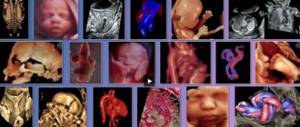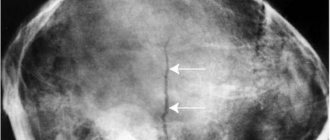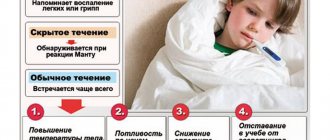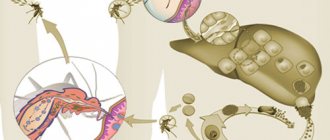ARVI is a disease primarily affecting the upper respiratory tract, caused by the entry of a viral pathogen into the body. People with weakened immune systems are most prone to developing such an infection, especially during the cold season.
What is ARVI
ARVI is a collective concept that includes various acute infectious processes that arise as a result of damage to the epithelium of the respiratory system by DNA and RNA containing viruses. At the peak of seasonal incidence, a similar diagnosis is determined in 30% of the world's inhabitants. The highest percentage of the total affected population and the severe course of the pathology are observed in children and the elderly.
How to cure ARVI?
Causes of the disease
ARVI develops when a person is infected by various groups of viruses, which are united by an affinity for the epithelial cells of the respiratory system, mainly the upper section. This feature of the pathogen facilitates its easy penetration through the protective barrier of the body’s mucous membranes.
The cause of infection is a sick person. Individuals are most pathogenic in the first 3-5 days of illness. The main place along the path of pathogen penetration is airborne. In rare cases, a household contact method is possible (through dishes, shared towels).
Since there are many serotypes of the causative agent of the pathological process, humans are sometimes characterized by multiple morbidity within a short time. Every few years, new influenza pandemics are recorded due to the emergence of new subtypes of the virus. ARVIs of non-influenza origin can lead to sharp “jumps” in morbidity in preschool and school institutions. If the attitude towards health is not serious enough, a banal viral infection can provoke exacerbations of chronic diseases, as well as the development of bacterial complications.
Why do people get ARVI?
Incubation period and first signs of ARVI
For the incidence of ARVI, it is different and varies from a day to 1.5 weeks. On average it takes 3-5 days. The smaller the “light” gap, the more difficult the process. The virus begins to be excreted by a person 24 hours after entering the body. Thus, even before the first symptoms appear, he is already contagious to others.
The first symptoms of ARVI:
- burning in the eyes;
- fever;
- rhinitis and lacrimation;
- sore throat;
- sleep disorders;
- hoarseness and swollen lymph nodes (sometimes).
Possible complications
Complications after ARVI in children can be very dangerous and serious, which is why comprehensive treatment is necessary. Self-medication or uncontrolled use of drugs can lead to the addition of bacteria. Complications of ARVI include:
- infection of the respiratory system with the addition of pneumonia and bronchitis;
- rhinitis and enlarged adenoids;
- tracheitis and laryngitis.
When a secondary infection occurs, it can spread to nearby tissues of other organs and provoke pathology of the kidneys and digestive system. Any medication can be considered a stressor for the body, so special care must be taken in choosing a medication.
The first signs of ARVI in newborns and children under one year old
Young children rarely get sick from ARVI due to their innate immunity, supported by breastfeeding and a small circle of contacts with other people. However, if he does get sick, the process begins with severe weakness and general lethargy. The child sleeps poorly and restlessly and loses his appetite. Due to frequent nasal congestion and sore throat, sucking function is impaired. Since verbal (speech) contact with such a baby is impossible, timely contact with a pediatrician is necessary to determine treatment tactics and regular examinations to exclude dangerous complications.
This age group is characterized by:
- restlessness and crying;
- cough, pain when swallowing;
- sneezing;
- lacrimation;
- sometimes diarrhea;
- in rare cases – the addition of viral conjunctivitis.
Main symptoms
In the first days of the disease, the symptoms of ARVI in children are nonspecific and have virtually no effect on their overall well-being. However, everything depends on the child’s immunity and the characteristics of his body. Among the main symptoms of ARVI in children are the following:
- sneezing;
- cough;
- runny nose;
- fever and body aches;
- capriciousness.
Throughout the incubation period, no special signs of the disease may be observed. When a child gets sick with ARVI, sneezing appears almost immediately, and many parents may confuse it with an allergic reaction. Initially, it is observed several times a day, so if this sign appears, you should immediately consult a doctor. This will avoid complications and ease the course of the disease.
The cough during ARVI in children in the first days of the disease is often dry, and their well-being is disturbed. The child sleeps very poorly, his appetite worsens, and he becomes restless. That is why it is very important to immediately start taking medications that help reduce its intensity.
A runny nose occurs almost immediately after infection. Nasal congestion disrupts a child's normal sleep. If he is still breastfed, this also worsens the process of breastfeeding. The baby often comes off the breast, is capricious and cries. If this symptom occurs, it is important to help the baby in a timely manner. Lack of timely treatment can lead to hearing loss. Mucus from the nasal cavity flows into it and leads to inflammation.
Elevated temperature is not observed in children from the very first day and increases as symptoms increase. It very rarely reaches 39 degrees. In some cases, ARVI occurs without fever in a child, and this is due to the fact that the immune system cannot independently fight viruses in the body.
A child's capriciousness is considered a manifestation of intoxication. Infectious diseases accompany weakness and lethargy. It becomes quite difficult for children to show their usual activity, and this is often associated with elevated temperature.
Many children suffer from a severe form of the disease, which is worth taking into account and you should try to consult a doctor in a timely manner for comprehensive treatment. It is strictly prohibited to use medications without a doctor’s permission and this is associated with the risk of complications.
How does acute respiratory viral infection occur in children under 14 years of age?
In such children, ARVI has various clinical manifestations.
Parainfluenza
Incubation up to 5 days. Characterized by an acute onset, temperature rise to 38*C. Symptoms of intoxication are not expressed.
The clinic is characterized by:
- “shallow” voice;
- a sore throat;
- dry frequent cough;
- runny nose with purulent discharge;
- in children 2-5 years old, stenosing laryngotracheitis and bronchitis may develop.
The disease lasts up to 10 days.
Adenovirus infection
Long wave-like flow. The onset is acute, in the form of chills, headache, hyperthermia, dry cough and runny nose with copious purulent discharge. The course of this type of illness is characterized by sore throat, swelling of the tonsils, enlarged lymph nodes and their soreness. Manifestations of conjunctivitis are possible. In the absence of treatment and non-compliance with the regimen, it is dangerous due to complications in the form of pneumonia, otitis, and sinusitis.
Respiratory syncytial infection
Incubation of MS infection for up to 7 days. The clinic depends on age. The older the child, the less pronounced the manifestations. Their disease is mild. In the clinical picture, manifestations of catarrh of the upper respiratory tract come to the fore. Intoxication is moderate, hyperthermia up to 37.5-38*C, scanty nasal discharge, dry rare cough.
In preschool children, the process is more pronounced: an obsessive cough with viscous sputum, noisy, labored breathing with heavy exhalation. Appetite drops sharply, the child is pale, and cyanosis of the nasolabial triangle is possible.
Complications are associated with the addition of bacterial flora (pneumonia, sinusitis).
Rhinovirus infection
The mildest form of ARVI. It starts with malaise. Temperatures up to 37.5*C are observed. Runny nose with copious watery discharge, sore throat, rare dry cough. Sometimes herpetic manifestations are added to the general clinical picture. There are no complications.
ARVI - what to do?
Prevention
Prevention of ARVI in children includes nonspecific and specific measures.
Non-specific measures include:
- complete nutrition in terms of composition and calorie content;
- providing the body with vitamins;
- hardening according to an individual scheme, providing for the regularity of hardening procedures, a gradual increase in the hardening dose of exposure;
- sufficient physical activity of the child;
- daily walks in the fresh air, etc.
Specific preventive measures include vaccination against influenza, the use of antiviral drugs when there is a threat of infection (Oxolinic ointment, Remantadine, Interferon).
It is unlikely that anyone will be able to avoid ARVI in a child, given the prevalence of viruses and the short-term immunity after infection. It is only important to contact a pediatrician in a timely manner and follow his recommendations in order to cure ARVI in a child without causing complications.
Clinical manifestations of ARVI in adults. First symptoms
The entire group of diseases related to ARVI is characterized by general patterns of clinical picture. These signs include:
- malaise and weakness;
- constant drowsiness;
- chills;
- runny nose. At the initial stage it is not abundant, but subsequently becomes more pronounced.
In addition to the above, each form of the disease is characterized by the development of specific symptom complexes.
Adenoviral infection:
- severe fever for up to 10 days;
- frequent wet cough that gets worse in a horizontal position and at heights of physical activity;
- severe runny nose;
- enlargement of all groups of lymph nodes;
- sore throat when swallowing.
Parainfluenza:
- incubation up to 7 days. The onset is sharp, sudden.
- temperature up to 38*C;
- rough cough, hoarseness of voice;
- chest pain;
- runny nose.
MS infection:
The symptoms are similar to parainfluenza. Its danger is that if you do not consult a doctor in a timely manner, complications in the form of bronchitis and pneumonia may develop.
What is the correct name: acute respiratory infection or acute respiratory viral infection?
Both of these abbreviations are often found in medical records, and in certificates of illness, and in periodicals. Many parents do not understand whether there is a difference between them, or whether they are both valid names for the same disease.
Acute respiratory diseases (ARI) is the general name for the entire group of respiratory diseases of an infectious nature: both viral (ARVI) and bacterial. This means that acute respiratory viral infections are included in the group of acute respiratory infections along with bacterial inflammation of the respiratory tract.
Features of the manifestation of ARVI in old age
How to cure ARVI?
The main problem that arises with the incidence of ARVI in people over 65-70 years of age is that most of them have a “bouquet” of various chronic processes. This factor has a negative role during the course of a viral infection. In such patients, the symptoms of general intoxication are more pronounced, hyperthermia is more difficult to tolerate, and the risk of bacterial complications is high. The most dangerous of them is fulminant pneumonia. It is characterized by: cyanosis of the skin, difficulty breathing, bloody sputum. With the development of such a complication, a high percentage of deaths occur.
Symptoms of viral infection in older people:
- fever up to 40*C;
- severe chills;
- myalgia;
- headache;
- severe weakness;
- insomnia, tiredness in the morning;
- feeling tired for several days;
- difficulty breathing, shortness of breath.
Rhinovirus infection:
The most favorable type of infection in terms of prognosis. With it, fever is either absent or does not exceed 37.5*C. Intoxication is not pronounced. The main complaint will be a runny nose with watery discharge, impaired nasal breathing, and frequent bouts of sneezing. Sometimes lacrimation and skin irritation in the area of the wings of the nose are possible. Complications usually do not occur.
MS infection:
Also an easy form of the process. Incubation up to a week. Clinical manifestations include fever up to 38*C, mucous discharge from the nasal passages, dry cough. As the disease progresses, it becomes frequent, barking, with copious thick mucus. Usually occurs without complications within 1.5 weeks. But sometimes secondary bacterial flora attaches.
Adenoviral form of the process:
Incubation – up to 1.5 weeks. Development is rapid with fever up to 39*C and severe chills. Hyperthermia lasts up to 5 days, then a downward trend begins. Following this, conjunctivitis is observed in one eye with further spread of the process to the second. Inflammation of the lymph nodes (cervical and submandibular), soreness, severe cough with copious sputum production occurs.
The lecture presents the general signs of viral respiratory diseases, the role of pathological susceptibility to infections, the significance of immunodeficiency, and gives the characteristics of the most common respiratory viral infections.
Acute respiratory infections of the upper respiratory tract are usually viral. Viral infections, due to their prevalence, possible complications, and the small number of etiotropic drugs, attract special attention primarily from outpatient clinicians [1].
Diagnosis of viral diseases, like no other, is constructed in a syndromic manner. There are very few viral diseases that can be diagnosed clinically and epidemiologically. These are measles, rubella, chickenpox, mumps, erythema infectiosum = fifth disease = parvovirus B19 infection, infectious mononucleosis and some others. Almost all of them belong to the so-called childhood infections. In general, the etiological and nosological diagnosis of viral infections is difficult and requires polymerase, serological, cultural, pathohistological and other studies.
Fig.1. Herpetiform tonsillitis. Typical non-abundant ulcerative follicular rashes on the soft palate
Common signs of viral diseases are:
1. Absence of purulent inflammation. This is manifested by frequent leukopenia, a normal or infrequently increased number of leukocytes without a left shift and without toxic granularity of neutrophils.
2. Many viral diseases are characterized by a lymphocytic reaction, most pronounced in infectious mononucleosis. Severe lymphocytosis is also found in viral hepatitis, mumps, rubella, measles, and cytomegaly.
3. The clinical picture is dominated by nonspecific changes in the form of weakness, lethargy, nausea, and arthralgia. These changes may appear before the main symptoms appear.
4. Preferential damage to certain organs in some viral infections. Thus, a febrile reaction is typical for influenza A-C viruses, measles, Ebstein-Barr, yellow fever, encephalitis, Marburg-Ebola, HIV1-2, herpes type 6, parvovirus B19. Exanthema is a characteristic manifestation of measles viruses, herpes simplex 1-2, herpes type 6, herpes zoster, chickenpox and vaccinia, parvovirus B19, Ebola. Diarrhea is caused by Norwalk virus infection, Rota virus. Meningoencephalitis is typical of poliovirus, cardiovirus, encephalitis virus, and parvovirus B19. Lymphadenopathy is a typical symptom of Ebstein-Barr virus infection. Pleurisy and carditis are observed mainly with coxsackie B infection (Table 1).
Legend: *LCM = lymphocytic meningitis; A = primarily in Coxsackie A; B = primarily with Coxsackie B;
5. Serological testing is of decisive importance in diagnosis. Isolating viruses is a very labor-intensive procedure, which is rarely used for practical purposes.
Among viral diseases, the main place in terms of prevalence belongs, of course, to upper respiratory tract infections, or the so-called colds, runny nose, and catarrh. This is an acute, usually viral infection of the respiratory tract with inflammation of some part or all of the airways, including the nasal cavity, paranasal sinuses, pharynx, larynx, and sometimes the trachea and bronchi. Children suffer from 2 to 10 episodes of upper respiratory tract infections per year [2]. In 90% of cases these are viral infections (picornaviruses, primarily rhinoviruses, echoviruses and coxsackieviruses). Only 10% are mycoplasma and chlamydia; 40-55% of all upper respiratory tract infections are caused by one of more than 100 serotypes of rhinoviruses. In a relatively closed community (for example, a school), one virus is responsible for the explosion of morbidity. Rhinovirus infection is rare during the winter months, when influenza and respiratory syncytial virus predominate. Staying in the cold in itself, the condition of the upper respiratory tract (adenoids, tonsil hyperplasia) do not lead to viral infections of the upper respiratory tract. The disease is more severely suffered by obese people, people under stress, with allergic nasopharyngitis, in the middle of the menstrual cycle. Much more important are specific neutralizing antibodies in serum and secretions. Their presence indicates previous contact with this or a similar virus and relative protection from infection [3].
Clinical symptoms are nonspecific. After 24-72 hours of the incubation period, a “burning” sensation in the nose or throat begins sharply, quickly giving way to sneezing, rhinorrhea, and general malaise. Typically, an increase in body temperature, especially with rhino- and coronaviruses, is not typical. Pharyngitis develops early. The likelihood of laryngitis and bronchitis varies depending on the resistance of the microorganism and the etiological agent. Nasal discharge, watery and profuse, in the first days becomes mucous and mucopurulent. The latter option does not necessarily indicate a bacterial infection. The cough is quite mild and, as a rule, ends in the next 2 weeks. In differential diagnosis (DD), it is necessary to take into account allergic and vasomotor rhinitis, bacterial sinusitis. Bacterial damage to the upper respiratory tract, lungs, and other organs follows the viral one. This likelihood is especially high in young children, the elderly and patients with immunodeficiency.
Frequent recurrent illnesses lead to anxiety among parents; the doctor does not always correctly assess the condition. As a result, such children are admitted for consultation with a referral diagnosis of “immunodeficiency” or “secondary immunodeficiency”. Indeed, immune deficiency is accompanied by recurrent fever and, not least, respiratory symptoms.
Indeed, as a result of the age-related dynamics of our functions, previous diseases, drug interventions, or for other reasons, acquired immunity disorders can develop. In general, secondary immunodeficiencies are characteristic of premature infants, low birth weight, healthy newborns, the elderly, patients with chromosomal abnormalities, hereditary and metabolic diseases, immunosuppressive agents, tumors, many infectious diseases, severe injuries, widespread burns, and side effects of medications.
DD signs of physiological and pathological susceptibility to infection are summarized in Table 2.
table 2
Signs of physiological and pathological susceptibility to infection
| History, general condition, examination results | Physiological reaction | Pathological manifestations |
| General state | healthy | Chronically ill |
| Delayed growth and development | No | Eat |
| Frequency of infections in family history | Common for this population | Promoted |
| Consanguineous marriage | No | Yes |
| Multiple organ infection | No | Yes |
| The pathogen is atypical | No | Yes |
| The pathogen persists | No | Yes |
| Complicated course of infection | No | Yes |
| Recovery from a defect | No | Yes |
| Previous infection protects against reinfection | Yes | No |
| Post-vaccination infection after live vaccines | No | Yes |
| Lymphatic tissue hypoplasia | No | Yes |
| Graft versus host disease after administration of blood products | No | Yes |
Unfortunately, many experts perceive the conclusion about secondary immunodeficiency as self-sufficient. They resort to it especially readily in pediatrics, characterizing the so-called frequently ill children, without thinking about the word “secondary” and without really assessing the clinical significance of the syndrome. But they forget that children of a certain age, in certain conditions, in some groups, are simply obliged to suffer from so-called “colds”, “viral” diseases. In many languages, this period is characterized roughly but accurately by the main symptom: brat = rotznase (German) = snotty (English) = mocciso, marmcchio (Italian) = morveux (French) = mocoso, mocosuelo (Spanish) = snÆrrunge (Norwegian) = smarkucz, zasmarkane dziecko (Polish) = usmrkănek (Czech) = blavac (Srbkhv.) = semmirekellember (Hungarian) = sümüklü (Turkish). Secondary conditions, as a rule, are not treated, or their treatment is of little benefit. Primary conditions are treated. Secondary conditions, in our opinion, are important for the doctor in the following aspects: the conviction that they are truly secondary; genesis; DD; prospects for transformation into defining and threatening ones.
Before talking about immunodeficiencies, the doctor should remember that there are a lot of conditions that have external manifestations of immunodeficiencies. It is necessary to pay attention to the patient’s age and gender, his property and cultural status, nutritional status, living and working conditions, alcoholism, drug addiction, chronic infections, social infections (tuberculosis, sexually transmitted infections).
The unusual course of infections is typical for the following syndromes:
· circulatory disorders, including at the level of microcirculation, congenital and acquired defects of the heart and great vessels; severe chronic anemia; diabetes;
· obstruction of hollow organs, stenosis of the ureter or urethra; bronchial asthma; bronchiectasis; cystic fibrosis; disordered cilia flicker syndrome; violation of the patency of the Eustachian tube (anatomical variations, violent adenoid vegetations);
· nutritional defects and conditions with loss of protein, stress, malnutrition of any origin; nephrotic syndrome; protein-losing enteropathy; eczema; burns; fractures of large bones;
· foreign bodies, ventricular shunts for hydrocephalus; intravascular stents; artificial heart valves; pacemakers; catheters in the bladder; foreign bodies aspirated or forgotten during operations;
· unusual manifestation of the microbial factor itself, the growth of unusual flora after iatrogenic elimination of habitual pathogens; chronic infection with resistant microorganisms; constant reinfection (consumption of contaminated food or water, staying in a contaminated atmosphere in poultry houses, zoo farms, laboratories, etc.; constant contact with humans or animals carrying the infection; contaminated air conditioners, inhalers and medical instruments).
A group of experts from the European Society for the Study of Congenital Immunodeficiencies has developed 10 warning signs of primary immunodeficiency conditions:
1) the presence of primary immunodeficiencies in the patient’s relatives, early deaths from severe infections, or one of the following conditions;
2) lagging infant in weight and height;
3) persistent thrush or fungal infection of the skin over the age of 1 year;
4) frequent otitis media (at least 6-8 times a year);
5) several confirmed serious sinusitis (at least 4-6 times during the year);
6) more than two confirmed pneumonias;
7) repeated deep abscesses of the skin and internal organs;
 the need for long-term antibiotic therapy to relieve infection (up to 2 months or longer);
the need for long-term antibiotic therapy to relieve infection (up to 2 months or longer);
9) the need for intravenous antibiotic therapy to stop the infection;
10) at least two deep infections such as meningitis, osteomyelitis, cellulitis, sepsis.
If the patient has 2 or more of the signs just listed, then a diagnosis of immunodeficiency is likely.
Of course, the most important starting points for the diagnosis and DD of primary immunodeficiencies are recurrent infections, their high frequency, short or absent asymptomatic intervals, resistance of the infection to therapy, unusual course of the disease or unusual infection, difficult to explain or severe complications.
In the absence of these signs, we are talking about banal recurrent infections. Remembering the brilliant statement of E.M. Tareev that “common diseases are common, and rare diseases are rare,” the doctor, after excluding life-threatening and emergency conditions, can focus on excluding the most common diseases.
Influenza is an acute respiratory disease with frequent subsequent accumulation of bacterial infections (strepto-, staphyllococci, pneumococci, etc.) caused by the influenza virus (myxovirus), transmitted by airborne droplets. Typical influenza pandemics are caused by influenza A virus, epidemics by types A and B, endemic outbreaks by viruses B and C. The influenza virus typically invades the epithelial cells of the mucosa with their necrosis and hemorrhagic syndrome. A severe disease begins after 1-2 days of the incubation period with high persistent fever, chills, intoxication, headaches and postorbital pain, skin hyperesthesia, myalgia, arthralgia. The cough is dry, painful, with scanty, viscous, slightly bloody sputum. Patients are bothered by chest pain. The most common complications are bronchiolitis, pneumonia, less frequent are otitis media, mastoiditis, and rare ones are myocarditis, pericarditis, meningoencephalitis.
Parainfluenza. The cause is paramicroviruses types 1, 2, 3 and 4, which cause respiratory diseases. The severity of the disease varies from a common malaise (“cold”) to influenza-like pneumonia. Parainfluenza occurs at any time of the year. Children are mainly affected, in whom these viruses, especially types 1 and 2, cause subglottic laryngitis[1]. Adults are already naturally immunized, and the infection is easier for them.
The first encounter with parainfluenza viruses types 1 and 3 occurs in childhood and early childhood in nurseries, kindergartens and schools. The type 3 virus is especially contagious, affecting children under 1 year of age. Type 2 causes epidemic outbreaks in all age groups. Type 4 has cross-antigens with the mumps virus; infection with this type of parainfluenza virus is quite mild.
In children, parainfluenza occurs as an acute febrile respiratory disease. Clinically, it is indistinguishable from influenza or other respiratory diseases of the same age group. The incubation period depends to some extent on the type of virus: 24-28 hours for parainfluenza viruses 3 and 4-5 days for parainfluenza virus 1. The disease begins with fever and a mild runny nose. General symptoms depend on the severity of the fever. In most cases, the temperature does not exceed 38°C, but can reach 40°C. Hyperthermia lasts 2-3 days, with damage to the lower respiratory tract - a week or more. Bronchitis or viral pneumonia with volatile infiltrates develops during or immediately after the first acute episode of a viral disease, more often in children, less often in adults infected with type 3 virus.
Respiratory viral syncytial infection = acute viral disease of the lower respiratory tract (including bronchiolitis and pneumonia) in infants and preschool children).
The virus contains RNA and is classified as a pneumovirus. Serologically, subgroups A and B are distinguished. They resemble influenza and parainfluenza viruses. Respiratory syncytial viruses are the most important cause of lower respiratory tract disease, which can be fatal. Many cases of so-called sudden death syndrome in young children are associated with this virus. In adolescents and adults, syncytial infection has a favorable course, although it can cause bronchopneumonia. For the elderly and those with chronic bronchopulmonary diseases, it is no less dangerous than for infants.
By age 5, 70% of children already have syncytial virus antibodies, but the infection can recur at any age. The low protective effect of antibodies is confirmed by the fact that in children under 6 months of age, despite their presence in the blood due to transplacental transmission, the infection is very severe, primarily with bronchopulmonary dysplasia.
The clinical picture depends on age, characteristics of the virus, and premorbid background. In children of the first year of life, apnea may appear, ahead of other symptoms. Quite specific signs of viral syncytial infection are severe shortness of breath, cough, and obstructive syndrome. Bronchiolitis and bronchopneumonia can be confirmed radiographically. The white blood cell count usually does not change. Viral syncytial infection causes blockade of corticosteroid receptors in the bronchi, hyperplasia of the muscle layer and is the most important factor in the formation of bronchial asthma in young children. The use of ribovin (ribovirin) in these patients significantly reduces the likelihood of developing bronchial asthma.
In older children and adults, the disease can occur without fever, similar to viral infections of the upper respiratory tract, but in them the virus can also simulate influenza and cause 14-18% of all hospitalizations for exacerbations of chronic bronchitis.
Adenoviral infection, which causes 4-6% of respiratory diseases, is much milder than influenza infection, like a common cold. Currently, more than 40 types of adenoviruses are known that cause fever, conjunctivitis, severe rhinitis, bronchitis, accompanied by a wet cough. Painful local lymphadenitis is quite common. Simultaneously with pharyngoconjunctivitis, vomiting, diarrhea and an increase in liver size often appear. In 10-13% of cases, pulmonary infiltrates are detected.
Only a few of these 40 types of viruses have been studied enough to speak about their clinical significance.
Coxsackieviruses, together with polio-, ECHO-viruses and the hepatitis A virus, belong to the enteroviruses (see polio). The incidence rate rises in spring and autumn.
Sore throat herpetiformis (Coxsackie A2, A4-6, A8, A10) develops mainly in children in the summer. The disease begins acutely with a high temperature of up to 410 C, general poor health, and intense sore throat. Typically, the presence of 10-20 papulovesicular rashes and ulcerations with a diameter of 1-2 mm with a narrow rim of hyperemia at the base of the soft palate, on the uvula and anterior arches (Fig. 1). DD is performed with Simanovsky-Vincent angina, aphthous or ulcerative stomatitis [4].
Oro-palmar-plantar erythema (Coxsackie A6, A10, A16) is a favorable febrile disease primarily of childhood. Vesicles appear on the mucous membrane of the oropharynx, palms and soles, transforming into ulcers that differ from sore throat herpetiformis in their larger size and localization, in addition to the oral mucosa, on the palms and soles.
Bornholm Island disease = epidemic pleurodynia (Coxsackie B3, B4) - epidemic myositis or polydenia - begins acutely with an increase in temperature to febrile levels, headaches, intense pain in the muscles, especially in the lower lateral parts of the chest and epigastrium, less often - in the muscles proximal limbs. The pain intensifies with breathing and movement, and is paroxysmal. In the intervals between painful attacks, the condition improves. Complications include serous meningitis, serositis, myocarditis, and orchiepididymitis.
Treatment of patients suffering from respiratory viral infections is usually symptomatic. The effect of aspirin, non-steroidal anti-inflammatory antihistamines, drugs, and vitamin C is disputed. Placebo is 40% effective.
V.M. Delyagin
Russian State Medical University
Federal Scientific and Clinical Center for Pediatric Hematology, Oncology and Immunology
Delyagin Vasily Mikhailovich - Doctor of Medical Sciences, Professor of the Department of Outpatient Pediatrics
Literature:
1. Rumyantsev A.G., Timakova M.V., Chechelnitskaya S.M. Monitoring the development and health of children (a guide for doctors). M.:Medpraktika-M, 2004. 388 p.
2. Rieger C., von der Hardt H., Sehnhauser F., Wahn U., Zach M. (Hrsg.) Pädiatrische pneumologie. Berlin, Springer-Verlag, 1999. 1157.
3. Beers M., Berkow R. (Eds.) The Merck Manual of diagnosis and treatment. West Point, 1999. 2833 pp.
4. Muntau A. Intensivkurs Pädiatrie. Urban & Fischer, Munich, 2004. 482 r.
5. Keshishyan E.S., Sakharova E.S. The use of the herbal preparation "Bronchipret" in the treatment of inflammatory diseases of the respiratory system in children. RMJ 2007; 21: 1546 - 1548.
[1] The development of subglottic laryngitis is predisposed by the presence of atopy in the family history or in the patient's history, high IgE titers, parental smoking, helminthic infestations, and gastroesophageal reflux disease.
Diagnosis of ARVI
It is often necessary to differentiate ARVI from colds and flu in order to carry out adequate therapy.
- State of health: Rapid deterioration. For a cold – not expressed; with influenza – rapid deterioration of the condition. Sometimes the patient is even able to name the exact time of onset of symptoms).
- Intoxication: manifested by severe fatigue. With a cold – not expressed; with influenza, severe: photophobia, pain in the eyes.
- Temperature: up to 37.5. In patients with colds – up to 38*C. For the flu – up to 40*C.
- Runny nose: appears on day 1-2, accompanied by sneezing. In patients with a cold, it begins immediately; flu - on days 3-4, associated with cough, chest pain.
- Sore throat: occurs together with a cough and is intense. In case of a cold – discomfort for 2-3 days. With the flu - it manifests itself on the 3-4th day, accompanied by a strong, painful cough).
- Headache: occurs as a consequence of bacterial complications. Cold - this symptom is absent. With influenza – pronounced.
- Sleep disturbance: due to high temperature. For colds – absent. In patients with influenza it is pronounced and persists for up to 3 weeks.
Effective Treatments
How to treat ARVI in a child? Many types are dangerous due to complications. Children with weakened immune systems often suffer from secondary infection, and the course of the disease becomes more complicated. A comprehensive approach to therapy and compliance with pediatrician’s prescriptions is required.
General principles
Recommendations:
- Bed rest is required for the first days;
- refusal of physical activity;
- light food, plenty of drink. Never give a patient hot tea; the liquid should be warm;
- wet cleaning twice a day;
- regular ventilation of the room;
- symptomatic therapy.
When should a child be hospitalized:
- early age;
- complicated course, especially with adenovirus infection and influenza;
- the disease develops against the background of cardiovascular or renal pathology;
- the child suffers from bronchial asthma, and other pulmonary diseases have been identified.
Drug therapy and physiotherapy
Use a complex of drugs:
- antihistamine compounds to reduce toxic manifestations: Zyrtec, Erius, Suprastin, Claritin, Diazolin;
- in case of extreme heat, pronounced symptoms of illness, or feeling unwell, give Paracetamol, Efferalgan, Ibuprofen. Consider the patient’s age, do not exceed the dosage or duration of administration;
- syrups, cough tablets: Mucaltin, Ambroxol, Bromhexine, Alteyka, Doctor Mom, Dr. Theis syrup;
- antiviral drugs are recommended in the first days of illness. Arbidol, Anaferon, interferon preparations give a good effect;
- Nasal drops will help relieve nasal congestion. Use Sanorin, Evkazolin, Nazol for no more than a week;
- tube-quartz is an effective physiotherapy for inflammation of the nasopharynx. Ultraviolet rays penetrate inflamed areas and kill germs. If neoplasms, photosensitivity of the body, or a tendency to bleeding are detected, the procedure is contraindicated;
- gargling for sore throat, redness, swelling of the tonsils. Brew chamomile, sage, use eucalyptus tincture (half a teaspoon per 200 ml of water);
- antiseptic eye washes, age-appropriate drops for conjunctivitis. The drugs will relieve negative symptoms and reduce lacrimation. Instill eye drops with Albucid, Tobrex, Oftadex, Norsulfazole;
- antibiotics for ARVI. The drugs are recommended only for secondary infection. Bacterial complications as the infection progresses cannot be cured without antibiotic therapy.
READ ALSO: Helminthic infestations or ascariasis in children: symptoms and treatment, diagnostic methods and rules of prevention
Folk remedies and recipes
For viral infections, supplement treatment with proven home methods. The proposed recipes are safe for children and do not cause side effects.
If you are prone to allergic reactions, avoid honey, raspberries, and lemon. Consult an allergist about herbal remedies.
Recipes:
- sage in milk. To combat the symptoms of ARVI, you will need a glass of milk and a full tablespoon of herbs. Boil the medicinal mixture for 3 minutes, let it brew for 45 minutes, strain. Give it to your child for redness of the throat or severe cough. Dosage: a quarter glass, frequency – 3 times a day;
- tea with raspberries. For a glass of boiling water, 1 tbsp is enough. l. dry berries, fresh - 3 dessert spoons. Boil the tea and remove from the stove after 2 minutes. Wait until the dry raspberries swell in a sealed container (a quarter of an hour). Tea made from fresh berries is ready in 5 minutes. An excellent remedy for heat and inflammation. A small patient should drink 1–2 glasses of tea per day, taking into account age;
- inhalations with medicinal herbs. Chamomile, oak bark, sage, coltsfoot, and eucalyptus will help relieve nasal congestion. If the body is not overly sensitive, add 3-4 drops of essential oil to a 500 ml container. Lemon, eucalyptus, rosemary ether, healing fir oil will help against colds;
- Tea with lemon. Ascorbic acid, which citrus fruits are rich in, is an excellent help in the fight against viruses and bacteria. A piece of lemon in tea is tasty and healthy. Give your child a lemon along with the peel: scientists have proven that it contains many valuable substances. Wash the citrus fruit well before use. Know the limit: 2 thin pieces per day for younger children, 3-4 thin pieces for schoolchildren;
- coltsfoot decoction. For 500 ml of boiling water you will need a couple of tablespoons of dry leaves. Steam the raw materials, wait half an hour, filter. Give the children half a glass in the morning and evening. Coltsfoot makes you sweat, reduces inflammation, fights germs;
- lime tea. An effective remedy for fever, to relieve symptoms of intoxication. An excellent diaphoretic drink. The sooner a child starts drinking linden tea, the less likely it is that the disease will become severe. Proportions: for half a liter of boiling water you will need 3 tbsp. l. linden color. Boil for 10 minutes, cool. If you are not allergic, give the drink with honey. You need to drink a couple of cups of healing tea within an hour.
Symptoms of ARVI requiring emergency help
Typically, therapy for a viral infection does not require hospital treatment and is carried out on an outpatient basis. However, some serious conditions require urgent seeking specialized help and possible further hospitalization. These include:
- fever with numbers 40* and above without a significant effect from taking antipyretics;
- severe headaches with painful attempts to flex the neck to bring the chin to the chest (positive meningeal symptom);
- fever without improvement for 5 days;
- chest pain when breathing, shortness of breath, cough with sputum, which in severe cases becomes pink;
- green or brown discharge from the nasal passage mixed with fresh blood;
- pronounced swelling.
How to treat ARVI in children and adults
How to treat ARVI?
Treatment of ARVI in newborns and children under 1 year of age
At the first signs of illness, you need to start rinsing your nose. For this procedure, it is recommended to use saline solution or furatsilin, brew a decoction of chamomile or calendula. It is also possible to use drops of aloe or Kalanchoe juice. Among pharmaceutical preparations, the most acceptable ones are those with a natural composition: Aqua-Maris, Salin, etc.
In severe cases and in cases of prematurity, hospitalization is indicated.
To get rid of cough, rub the back and chest with animal fat. Pharmacy products that are safe for babies:
- Stodal syrup - for dry cough;
- herbal syrups Prospan and Gedelix - in the presence of sputum;
- to reduce symptoms of fever - Nurofen or Panadol.
ATTENTION!
Strictly contraindicated:
- dress and wrap up heavily, because this leads to a “greenhouse” effect;
- give analgin and antibiotics;
- bring the temperature below 38*C (except for cases of convulsions in the anamnesis);
- instill garlic or onion juice;
- lubricate the mucous membranes of the mouth and throat with honey (due to high allergenicity).
How to treat ARVI in older children
For such patients, the main measures come down to isolation measures, a gentle regimen, an adequate diet, and plenty of warm (NOT HOT!) drinks. Ventilation of the room, symptomatic (antipyretics, expectorants, vasoconstrictors) and antiviral agents (isoprinosine, resistol) are necessary. Hospitalization is indicated for concomitant severe chronic pathology, complications with bacterial flora.
Treatment of ARVI in adults
Bed rest comes to the fore in measures to restore health in adults. In mild to moderate cases, therapy is carried out on an outpatient basis. In severe cases, hospitalization in an infectious diseases hospital or in a specialized department of a hospital is necessary.
Basic recommendations:
- mode;
- impact on the pathogen (antiviral agents);
- symptomatic therapy (elimination of a runny nose, reduction of sore throat, antitussives and expectorants);
- use antibiotics only if complications develop;
- reduction of intoxication (drinking plenty of fluids, gentle diet).
Why do children often get ARVI?
Factors contributing to frequent ARVI in children are:
- closer contact between children in groups;
- variety of pathogens: immunity, which is not long-lasting, is developed only to one type of virus; other types and types of viruses can cause a new disease even in a child who has not fully recovered;
- an insufficiently formed immune system in children under 2 years of age or decreased immunity in older children under the influence of various factors;
- insufficient physical activity or physical inactivity;
- the presence of chronic foci of infection;
- hypovitaminosis;
- anemia;
- insufficient child care, allowing hypothermia, staying in wet shoes;
- insufficient hardening;
- unventilated areas;
- lack of separation from the sick family member;
- unfavorable environmental situation;
- hereditary predisposition to respiratory diseases.
Drugs used to treat ARVI
How to quickly cure ARVI?
Antiviral:
- gropprinosin;
- amiksin;
- remantadine.
You can take funds from this group for up to 5 days.
Non-hormonal anti-inflammatory drugs:
- ibuprofen;
- paracetamol;
- diclofenac.
Combined type products:
- Coldrex;
- fervex;
- Theraflu.
What happens if ARVI is not treated?
Diet for ARVI
Diet for illness is reduced to the exclusion of fatty, fried, spicy foods. It is also strongly recommended to completely avoid alcohol.
At each stage of the process it is possible to create a menu :
- At initial symptoms, when there is an almost complete lack of appetite, greater fluid intake is recommended. It is possible to add baked apples, low-fat varieties of yogurt, fermented baked milk, and 1% kefir to the diet.
- On days 2-3, milk porridges (in the absence of high fever numbers), broths, and lean meat are added.
- At the recovery stage - stewed and boiled vegetables, low-fat fermented milk products.
Video: Seven rules for treating ARVI for adults and children
Tags:
Share on social networks:
You might be interested in reading:
- Causes of periodontitis and symptoms of the disease. How to treat periodontitis in the clinic and at home. Prevention of periodontitis
What is floating and how does the procedure work? What are the benefits of floating for the body, indications and contraindications for floating
How to relieve tooth sensitivity at home using folk remedies. Prevention of tooth sensitivity
How to treat stomatitis in children in the mouth: aphthous stomatitis; herpetic stomatitis; fungal stomatitis. Causes, symptoms and prevention of stomatitis in a child











